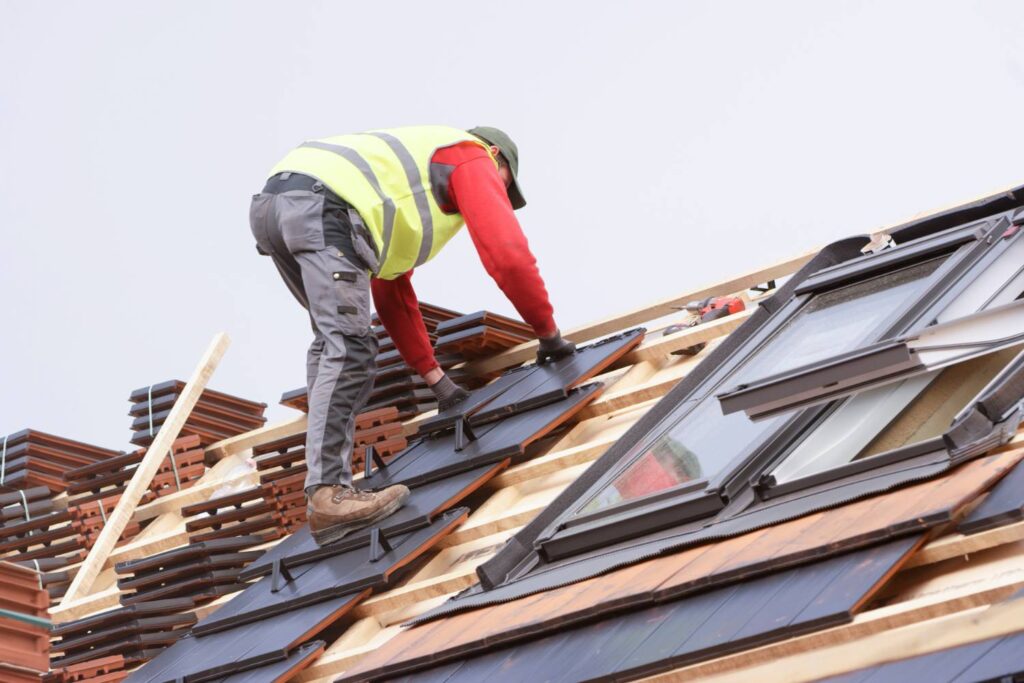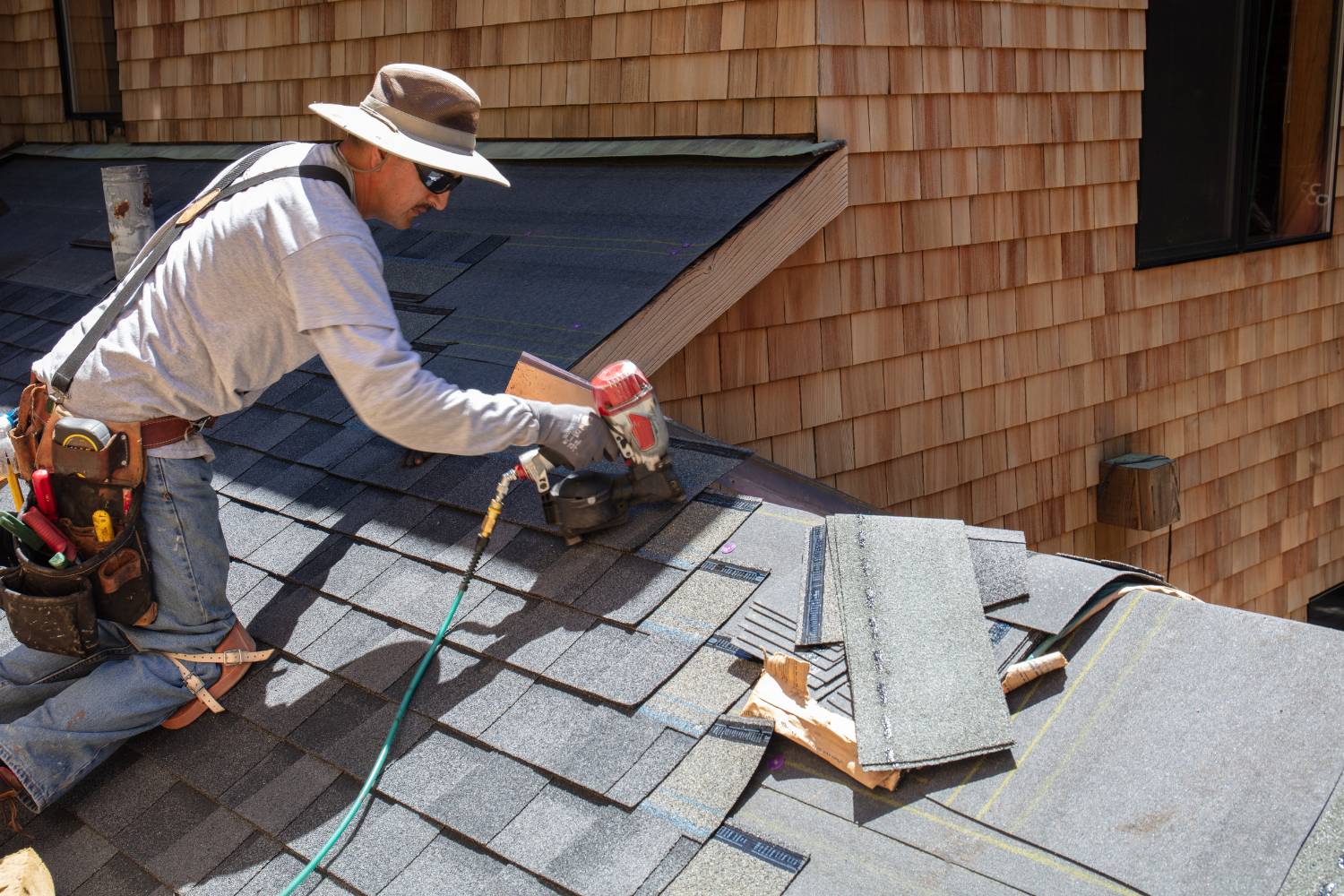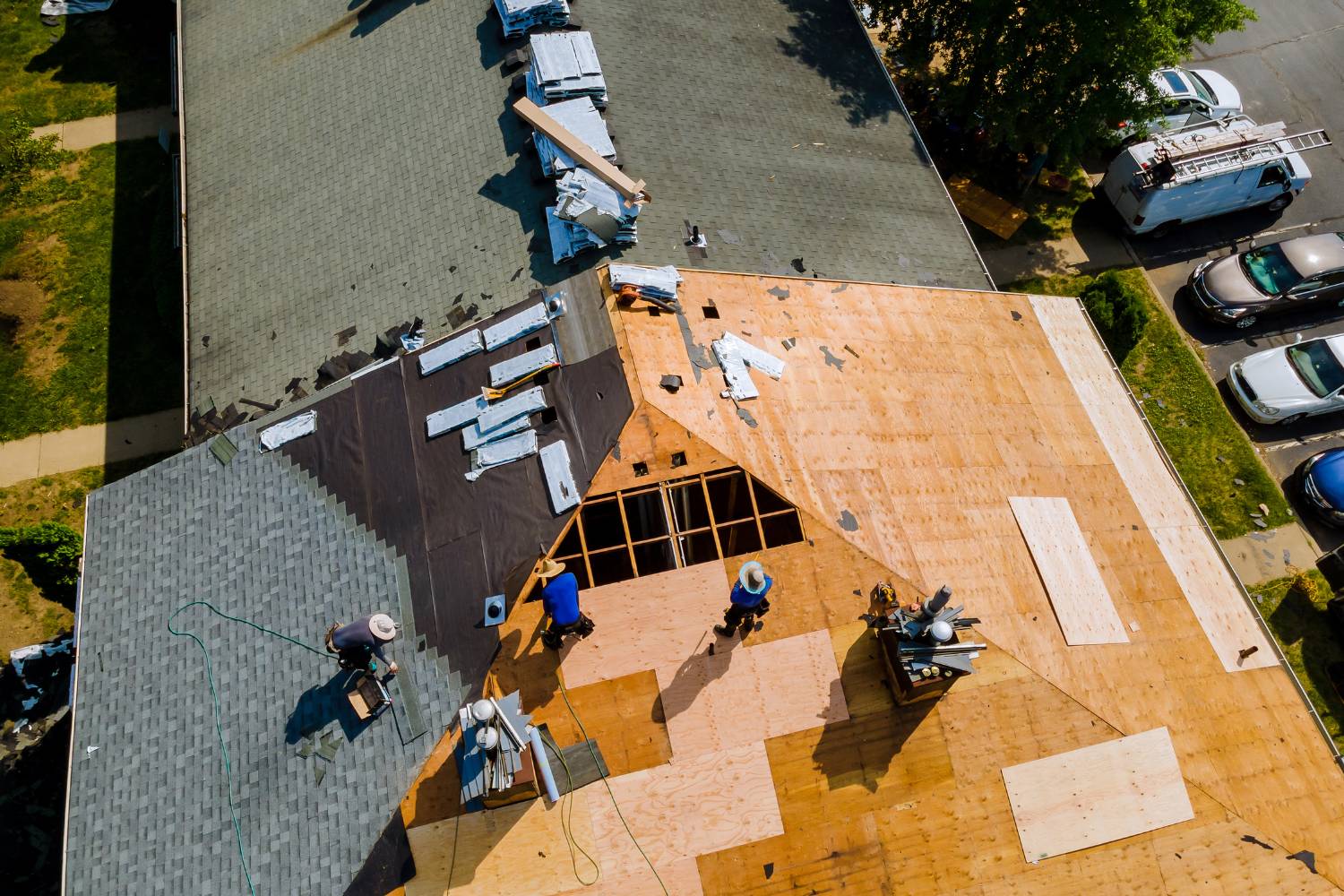Improving the curb appeal of your home is about more than just aesthetics; it's about ensuring the longevity and functionality of one of your most significant investments: your roof. Roof restoration is a crucial process that not only protects your home from various elements but also enhances its overall value.
In this comprehensive guide, we'll explore the importance and benefits of roof restoration, exploring how it can extend the life of your roof, save you money, and boost your property's curb appeal.
What Is Roof Restoration and Why Is It Important?
Roof restoration is a critical process that ensures the longevity and functionality of your roof, protecting your home from various elements. This comprehensive guide aims to provide you with detailed insights into the importance and benefits of roof restoration.
Importance of Roof Restoration
- Prolongs Roof Lifespan: Regular maintenance and timely restoration can significantly extend the life of your roof, delaying the need for a full replacement.
- Cost-Effective: Restoration is generally more affordable than replacement and helps prevent expensive repairs by addressing issues early.
- Improves Energy Efficiency: A restored roof can enhance insulation, reducing energy costs.
- Increases Property Value: A well-maintained roof boosts curb appeal and can increase the overall value of your property.
- Prevents Major Damage: Timely restoration addresses minor issues before they escalate into significant problems, such as leaks or structural damage.
Benefits of Roof Restoration
- Extended Lifespan: Restoration can significantly extend the life of your roof, saving you money in the long run.
- Cost Savings: It's more affordable than a full replacement and reduces the need for frequent repairs.
- Energy Efficiency: Improved insulation and ventilation from restoration can lower energy bills.
- Prevention of Leaks: Addressing potential issues early prevents leaks and other water damage.
- Enhanced Property Value: A restored roof improves the overall appearance and value of your home.
Types of Roofs and Their Maintenance Needs
- Shingles: Commonly used due to their affordability and ease of installation. They require regular inspections for damage from wind and fading.
- Slate Roofs: Known for their durability and aesthetic appeal but are high maintenance and expensive to repair.
- Metal Roofing: Durable and low maintenance, but requires regular checks for warping and rippling.
Benefits Of Roof Restoration For Curb Appeal
Roof restoration is a vital home maintenance task that not only extends the life of your roof but also significantly enhances the aesthetic appeal of your property. This blog explores the various benefits of roof restoration, particularly focusing on how it boosts curb appeal.
Enhancing the Aesthetic Appeal
Roof restoration can revitalise the look of your home by addressing worn-out, faded, or damaged areas. Applying new coatings or paints can give your roof a fresh, modern look that complements the rest of your home. Restorations often provide an opportunity to change the colour of your roof, allowing you to update the overall appearance of your home and keep it looking current with contemporary trends.
Extending Roof Lifespan
Roof restoration involves thorough cleaning, repair, and protective coatings that extend the life of your roof by preventing further deterioration. This process can add an additional 10-15 years to your roof's lifespan. By addressing minor issues such as cracks, leaks, and worn-out materials early, restoration prevents more significant damage that could lead to costly repairs or a full roof replacement.
Cost-Effective Solution
Compared to a complete roof replacement, restoration is a cost-effective solution. It typically costs a fraction of the price, saving homeowners a substantial amount of money. Restored roofs often come with improved insulation properties, reducing heating and cooling costs. This efficiency not only saves money but also contributes to a more sustainable home.
Increasing Property Value
A well-maintained roof makes a significant first impression. Potential buyers are more likely to be attracted to a home that looks well-cared-for, and a restored roof can be a key selling point. Homes with recently restored roofs tend to have higher market values, as buyers recognise the benefits of not having to invest in immediate roof repairs or replacements.
Eco-Friendly Option
Roof restoration is an environmentally friendly option because it reuses the existing structure rather than requiring new materials. This reduces waste and the environmental impact associated with manufacturing and transporting new roofing materials.
Improved Safety and Functionality
Restoration includes sealing and waterproofing, which protects the roof from leaks and weather damage. This ensures the safety of the home's interior and structural integrity. Improved coatings and materials used in restoration enhance the insulation properties of the roof, leading to a more comfortable indoor environment and reduced energy usage.
Practical Steps In Roof Restoration
Roof restoration is a vital process that involves more than just superficial repairs or a fresh coat of paint. It's about reviving an old, worn-out roof and restoring it to its former glory, ensuring it provides optimal protection and aesthetic value for years to come. This guide will outline the essential steps involved in roof restoration, making it easier for you to understand and undertake this critical task.
Comprehensive Roof Inspection and Assessment
The first step in the roof restoration process is to conduct a comprehensive inspection and assessment. This involves a thorough inspection to identify all existing issues, including leaks, broken or missing shingles, and structural weaknesses.
A detailed report should then be obtained, outlining the condition of the roof, the necessary repairs, and the recommended restoration steps. This initial inspection is crucial as it sets the foundation for the entire restoration process by highlighting the areas that need attention.
Planning and Design
Once the roof's condition has been assessed, the next step is planning and design. This involves selecting materials that suit your local climate, aesthetic preferences, and budget. Options to consider include asphalt shingles, metal roofing, or slate.
Additionally, planning for improved insulation and ventilation is essential to enhance the building's energy efficiency. A detailed restoration plan should be developed, including timelines, material specifications, and safety measures. This plan will guide the restoration process, ensuring that everything proceeds smoothly and efficiently.
Site Preparation
Before any actual work begins, proper site preparation is necessary. Safety measures, such as installing scaffolding and other safety equipment, should be taken to ensure the protection of workers and the building’s occupants.
Additionally, protective measures should be implemented to shield windows, exterior fittings, and landscaping from potential damage during the restoration process. Proper site preparation helps prevent accidents and ensures that the restoration work does not cause unintended damage to other parts of the property.
Roof Repairs
With the site prepared, the next step is to carry out necessary roof repairs. This includes addressing any structural issues by reinforcing beams and replacing damaged framework components. Ridge capping should be inspected and repaired, ensuring it is properly rebedded and that the pointing is reapplied with flexible products. Any broken or missing tiles, rusty metal sheets, and faulty valley irons should also be replaced. These repairs are crucial to restore the roof’s structural integrity and prepare it for the subsequent restoration steps.
Cleaning and Preparation
After repairs, the roof must be thoroughly cleaned and prepared. Using a high-power pressure washer, dirt, dust, and loose materials should be removed from the roof surface. Treatments to sterilise and prevent the regrowth of lichen, moss, and mould should also be applied. This cleaning and preparation step ensures that the roof is free of debris and biological contaminants, which could interfere with the effectiveness of the restoration treatments.
Priming and Sealing
Once the roof is clean, it is ready for priming and sealing. The roof surface should be primed to address specific concerns, using a high-build primer for older, eroded tiles. Following the primer application, the roof should be sealed with appropriate products to enhance weatherproofing and longevity. Priming and sealing are vital steps that provide a protective barrier, helping to prevent future damage and extend the life of the roof.
Roof Membrane and Painting
The next step involves applying a durable roof membrane, such as a full acrylic elastomeric polymer, to protect against harsh weather conditions. Once the membrane is in place, the roof should be repainted with high-quality paint, available in various colours and finishes. This not only adds an extra layer of protection but also enhances the aesthetic appeal of the roof. Choosing the right membrane and paint is essential for ensuring that the roof can withstand the elements and look good for years to come.
Finishing and Final Inspection
The final step in the roof restoration process is finishing and final inspection. This involves ensuring that all elements are properly finished to maintain watertightness and structural integrity. A thorough final inspection should be conducted to confirm that all work meets the required standards and specifications. This step is crucial for verifying the quality of the restoration work and ensuring that the roof is fully restored and ready to provide long-term protection.
Cost Considerations
Roof restoration is a significant undertaking that can breathe new life into your home or commercial building. However, understanding the factors that influence the cost of roof restoration is crucial for effective budgeting and planning. This guide will delve into the various elements that impact the cost of roof restoration, helping you make informed decisions.
Size of the Roof
The size of your roof is one of the primary factors affecting the cost of restoration. Roofing companies typically charge per square metre, meaning larger roofs will naturally incur higher costs due to the increased amount of materials and labour required. Conversely, smaller roofs may have a higher per square metre cost due to fixed costs spread over a smaller area.
Roof Material
The type of material used in your roof restoration plays a significant role in determining the overall cost. Different materials vary widely in price. For example:
- Cement Tiles: Generally the most budget-friendly option.
- Terracotta Tiles: More expensive than cement but offer better durability and aesthetic appeal.
- Slate: Among the most expensive options but provides a unique look and long-lasting durability.
- Metal Roofing: Offers a balance between cost and durability but may require more maintenance.
Quality of Materials
Choosing high-quality materials can have a significant impact on the long-term benefits and costs of your roof restoration. While premium materials may have higher upfront costs, they often offer better durability, energy efficiency, and lower maintenance requirements, leading to cost savings over time. Quality materials can withstand harsh weather conditions and provide better insulation, enhancing the overall value of your restoration investment.
Labour Costs
Labour costs vary based on the complexity of the restoration project and the expertise required. Hiring experienced and skilled roofing professionals ensures high-quality workmanship and adherence to safety standards, which can affect the overall cost. It's important to obtain detailed quotes from multiple contractors to compare prices and services offered.
Long-Term Benefits
Roof restoration is an essential maintenance task that offers numerous advantages beyond just fixing visible damages. It involves revitalising the health of your roof, enhancing its lifespan, and ensuring that your home remains safe, efficient, and valuable. Here, we delve into the long-term benefits of roof restoration, highlighting why it’s a wise investment for homeowners.
Preventing Leakages
One of the most evident benefits of roof restoration is its ability to prevent leaks. Over time, roofs can develop weak points that allow water to seep through during rainstorms, causing extensive damage to the interior of your home. Restoration involves identifying and repairing these potential leak points, ensuring that your home remains dry and safe. By addressing these issues early, you can avoid costly repairs to walls, ceilings, and valuable possessions.
Extending the Lifespan of the Roof
Roof replacement is a costly endeavour. Roof restoration, on the other hand, is a more economical option that can significantly extend the lifespan of your existing roof. By addressing minor issues before they escalate, you avoid the need for premature replacement, saving you both time and money in the long run. Regular maintenance through roof restoration ensures that your roof remains in good condition for many years.
Conclusion
Roof restoration is not merely a cosmetic enhancement but a vital investment in the longevity, functionality, and aesthetic appeal of your home. By understanding the importance and benefits outlined in this guide, homeowners can make informed decisions to protect their property and maximise its value.
Roof restoration prolongs the lifespan of your roof, saving you money by delaying the need for a full replacement and preventing costly repairs. It improves energy efficiency, increases property value, and prevents major damage by addressing issues early. Additionally, it offers environmental benefits by reducing waste and minimising the need for new materials.
Through practical steps such as comprehensive inspections, proper planning, and quality materials, homeowners can ensure a successful restoration process. By considering factors such as roof size, material, and labour costs, they can budget effectively and reap the long-term benefits of a well-maintained roof.
Frequently Asked Questions
Roof restoration enhances curb appeal by revitalising the appearance of your home's roof. This process involves addressing worn-out, faded, or damaged areas through thorough cleaning, repairs, and the application of protective coatings or paints. By restoring your roof's aesthetic appeal, you can significantly enhance the overall look of your property.
Yes, roof restoration is a cost-effective option compared to full roof replacements. By addressing minor issues early and preventing further deterioration, restoration helps you avoid the significant expenses associated with complete roof overhauls. Additionally, restored roofs often come with improved insulation properties, leading to energy savings and long-term cost benefits.
The duration of a roof restoration project can vary depending on factors such as the size of the roof, the extent of repairs needed, and the weather conditions. On average, a roof restoration project may take anywhere from a few days to a couple of weeks to complete. It's essential to consult with roofing professionals to get a more accurate estimate based on your specific circumstances.
Roof restoration can address a variety of issues, including but not limited to:
- Leaks and water damage
- Worn-out or damaged roofing materials
- Fading or discoloured roof surfaces
- Moss, algae, or mould growth
- Poor insulation and energy inefficiency
By tackling these issues through comprehensive cleaning, repairs, and protective treatments, roof restoration helps prolong the lifespan of your roof while enhancing its visual appeal.
Yes, roof restoration can increase the value of your property by improving its overall appearance and functionality. A well-maintained roof is a significant selling point for potential buyers, as it signifies that the property has been cared for and is less likely to require immediate repairs or replacements. Additionally, a restored roof enhances curb appeal, making your home more attractive to prospective buyers and potentially increasing its market value.


